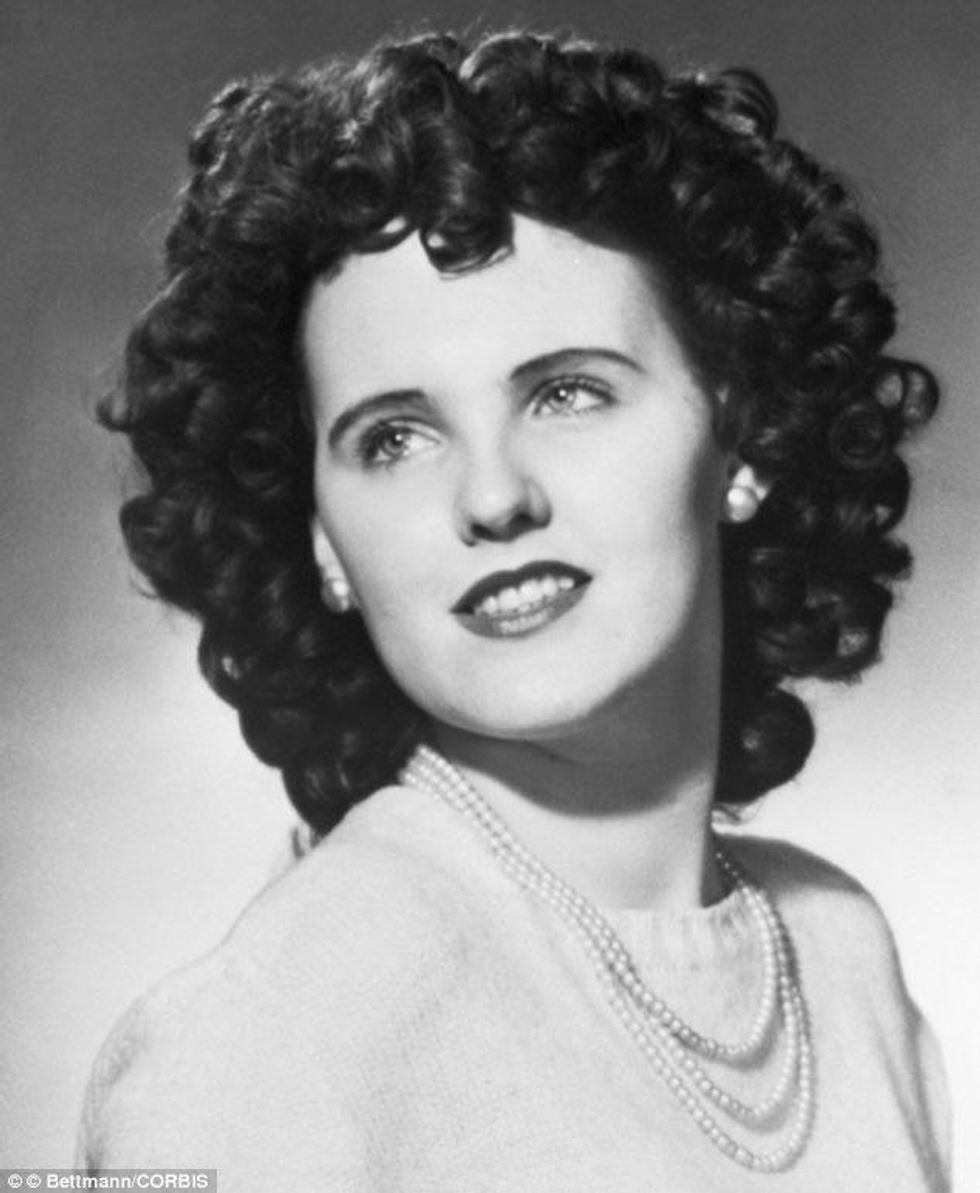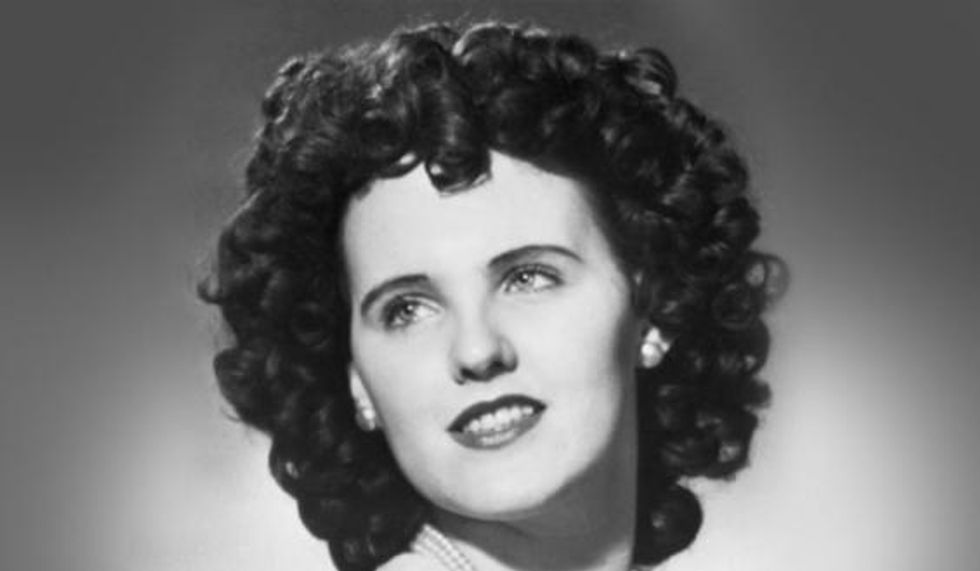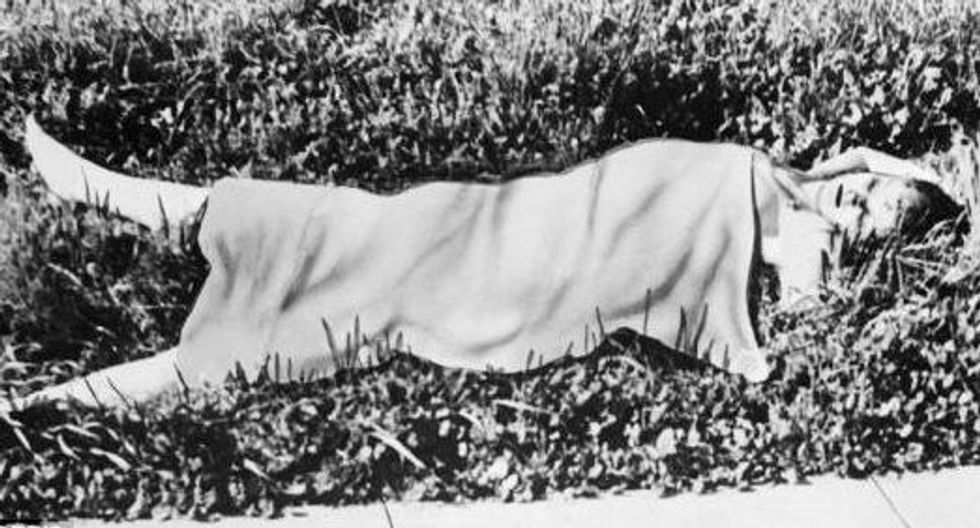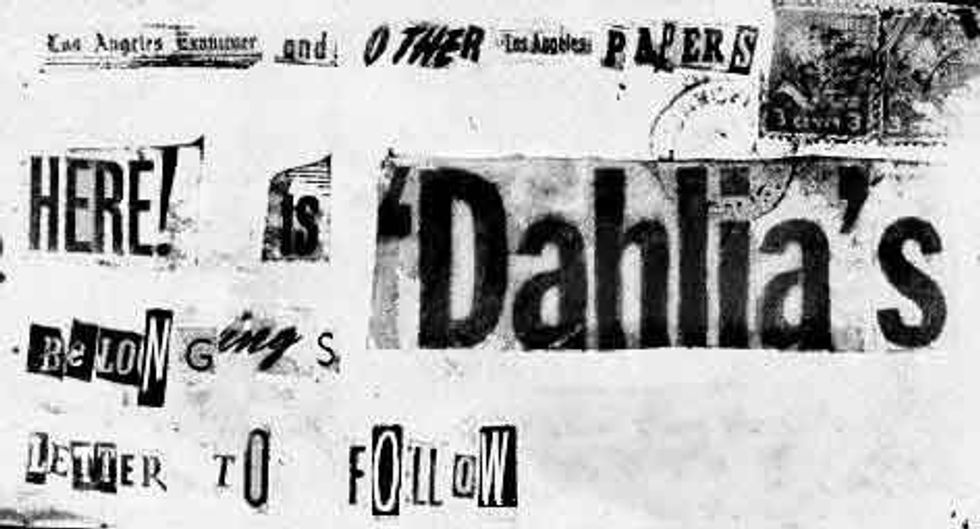The case of the Elizabeth Short, also known as the Black Dahlia, remains as one of the greatest unsolved murders in history. Her murder was gruesome and her body left on display without a care and the worst part is...
Her murderer is still out there.
Elizabeth Short, a beautiful young woman chasing the dream of becoming a big Hollywood actress, lived in Los Angeles, California and worked as a waitress.
Her dream would unfortunately end before it had a chance to begin.
Short was brutally murdered in January of 1947. She was only 22-years-old. Her body was found by Betty Bersinger who was walking with her three year old daughter. The body was in such a shocking state that Bersinger thought that the body was actually a broken store mannequin.
Short's body was completely cut in half at the waist and drained of blood, with her internal organs tucked underneath her bottom. Her bottom half was pulled a foot away from her top half and her face was cut from ear to ear giving her an everlasting smile (also known as the Glasgow smile). There were huge pieces of flesh cut away on her breasts and thighs. Her official cause of death was hemorrhage from the cuts to her face
.
There are many questions surrounding the case and after 70 years, answers are sparse.
Here are some of the haunting questions that still surround this case:
Why is she called the Black Dahlia?
There are two reasons that she may have been called this. One is in reference to all the black flowers that she would frequently wear in her hair. The other may have been a nickname after the 1946 film noir by Raymond Chandler called "The Blue Dahlia". There were a group of customers at a local drug store that coined the nickname after they heard about Short's death in the news.
Where was she killed?
It was clear to investigators that her body had been dumped in a location that was separate to where she was killed due to the lack of blood at the scene. The only piece of evidence that gave them a hint was a pile of cement that was found near the body that had traces of watered down blood.
Who turned in the letters?
Nine days after her body was discovered, the Los Angeles Examiner received an envelope that contained a few items. One was a letter written out with word clippings from magazines. It read:
("Los Angeles Examiner and other Los Angeles papers here is Dahlia's belongings letter to follow")
Along with this letter, the envelope contained Short's birth certificate, social security cards, random snapshots and an address book with several pages ripped out. There was no way to identify who sent in the letter due to the fact that everything was rubbed down with gasoline so the fingerprints were wiped off.
There were a few other letters sent but none with such jarring evidence like the initial one.
Who killed her?
This is the most essential question that remains unanswered in this case. Throughout the years there have been many different suspects and dozens of people even confessed to the murder but none of the claims held any weight.
The only viable suspect was a man by the name of George Hodel. His son, Steve Hodel, has been a huge participant in making sure the public is aware of what his father might have done. There are many different facts and pieces of evidence that point to George Hodel being the killer.
1. Hodel was a very intelligent doctor with a lot of knowledge about the human body, leading people to believe that his medical background would have allowed him to drain the blood of Short and cut her body with precision.
2. His son claims that there is striking similarity in his father's handwriting and the handwriting on one of the letters turned into the Los Angeles Examiner.
3. Hodel possessed photos that may have been photos of Short but no one is for sure.
(Left: Photo found in Hodel's possession. Right: Elizabeth Short)
4. After a few years of searching, Hodel's son found a file that claimed a female witness was sure that Hodel and Short knew each other.
5. There was one point where police thought of Hodel as a top suspect so they planted listening devices in his home and Hodel was quoted as saying this, "Supposing I did kill the Black Dahlia. They couldn't prove it now."
6. Even though Hodel was emerging as a lead suspect, the case was dropped and all physical evidence in the case was lost. It is believed that Hodel paid off the police force to stop their investigation. This claim would make sense because during this time, the police were known to be corrupt.
7. Years later, Hodel's son came back to their childhood home with a K-9 police dog that identified the scent of human remains in the home and in the alley way behind the home.
Even with all this compelling evidence against Hodel, he was never convicted. Hodel died in 1999.
The world will never know what happened to Elizabeth Short but her story lives on.
























